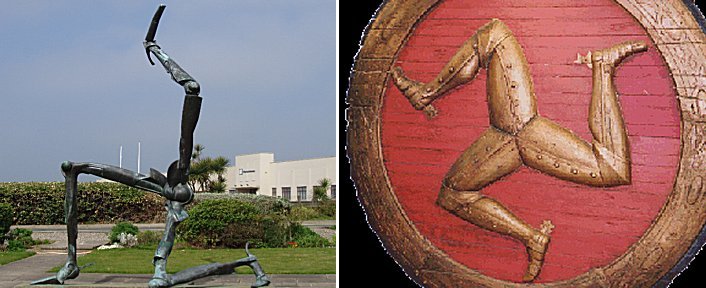Manannán Mac Lir – Irish God Of Sea, Healing, Weather And Master Of Shapeshifting
A. Sutherland - AncientPages.com - Manannán mac Lir (or Manann) - "son of the sea") - is a sea god in Irish mythology and the Welsh tradition; his other name is Manawydan.
Stephen Reid's illustration - Manannán's boat – The High Deeds of Finn and other bardic romances of ancient Ireland by T. W. Rolleston. http://www.gutenberg.org/files/14749/14749-h/14749-h.htm#IL16 - Public Domain
Generally, Manannán mac Lir is a popular figure in Irish mythology, and some Irish traditions even attempted to portray him as a historical figure.
Manannán mac Lir was also a god of the weather and healing. His father was Lir, an old and obscure god of the sea and ocean.
Manannán mac Lir had a beautiful wife, Fand (Fiand), who lived with his consent with a hero, Cuchulainn. Later, when she had to part with him, the god of the sea used to wear their mantle so that they would never meet again.
He raised the god Lugh (Luga) and was a foster father to other children.
Manannán mac Lir never lived on land but dwelled on a legendary island, Tír Tairngiri (' Country of Promise') or Mag Mell (' Plain of Joy').
Manannán mac Lir sculpture by John Sutton at Gortmore, Magilligan, County Londonderry. Credit: Kenneth Allen, Wikipedia, CC BY-SA 2.0
Even Emain Abhlach ('Island of Apple Tree') was associated with this sea god and the island of Avalon in later legends.
Curious Being With No Head Or Torso But Three Legs – Symbol Of The Isle Of Man
The name of this god derives from that of the Isle of Man (also known as Manx). In ancient beliefs, Mac Lir governed this place and protected it from invaders with his misty cloak.
As the legend says, he was the island's first ruler and "lived in a castle on the top of Mount Barrule.
Some stories claim his burial mound can be seen on the seashore beneath Peel Castle on the Isle of Man", and a vantage point looking out to sea was called Manannán's Chair, from which Manannán mac Lir was said to keep watch.
Manx fishermen claimed that, as they mended their nets, Manannán came to them, walking along the seashore followed by a curious being who seemed to have no head or torso but three legs—the symbol of the ever-moving sea and also the crest of the Isle of Man…" (P. Monagan)
On the Isle of Man, the history of the Triskelion ('three legs') dates back to pagan times and is originally a symbol of the sun, power, and life.
Extraordinary Magical Possessions
Manannán has many extraordinary magical powers. He owned a self-propelling boat named Scuabtuinne ("wave sweeper"), a sea-borne chariot drawn by the horse Enbarr ("water foam"), a mighty sword named Fragarach ("the answerer"), and a cloak of invisibility (féth fíada).
The god used a chariot drawn by horses to move across the sea waves, traveling faster than the wind could blow. His attribute was a pig, and he possessed magical pigs that could be eaten each day and appear alive the next day.
The Enbarr (Énbarr) was his horse mentioned in the Irish Mythological Cycle. The creature could traverse both land and sea. It was swifter than wind speed. Lugh Lamh-fada ( Irish: Lug Lámhfhada) had this horse at his disposal.
The Three-Legged Isle of Man Emblem, Manx Museum, Douglas.
He could change his form to become any creature he wanted, even a particular mortal if needed. He could grant his supernatural powers to others and create illusions of things to make them numerous or invisible.
Manannán mac Lir And Tuatha Dé Danann
Manannán mac Lir is believed to be older than the Tuatha de Danaan. This lineage is only given to him by a later tradition.
He remained affiliated with both the Tuatha Dé Danann and the Fomorians. However, he did not originally belong to Tuatha Dé Danann, one of the most central deities of ancient Ireland.
Tuatha Dé Danann accepted him. After the Milesians defeated them and they were forced to hide, he helped them.
They could retire to the Otherworld ('Sidhe' or the 'Hollow Hills') and remain invisible to people. The invisibility was brought by magical fog.
Manannán mac Lir gave Tuatha Dé Danann even more, namely, immortality and eternal youth. He also invited them to an extraordinary feast where magical pigs were served and endlessly renewed after being eaten.
Manannán Appeared In Literature And Scottish Folklore
In many Irish and Scottish tales, Manannán is sometimes a merchant mariner or a brave sailor with extraordinary celestial navigational skills, so he is never disoriented or lost at sea. Oral tradition has survived until today on the Isle of Man, and there are still many stories about the sea god Manannán mac Lir.
Written by – A. Sutherland - AncientPages.com Senior Staff Writer
Updated on December 10, 2023
Copyright © AncientPages.com All rights reserved. This material may not be published, broadcast, rewritten or redistributed in whole or part without the express written permission of AncientPages.com
Expand for referencesMoore A. W. The Folk Lore of the Isle of Man
Monagan P. The Encyclopedia of Celtic Mythology and Folklore
More From Ancient Pages
-
 Bulla Felix: Legendary Italian Leader Of Outlaws Who Robbed The Rich And Gave To The Poor
Featured Stories | Mar 23, 2023
Bulla Felix: Legendary Italian Leader Of Outlaws Who Robbed The Rich And Gave To The Poor
Featured Stories | Mar 23, 2023 -
 Nude Athletes And Fights To The Death: What Really Happened At The Ancient Olympics
Featured Stories | Aug 2, 2024
Nude Athletes And Fights To The Death: What Really Happened At The Ancient Olympics
Featured Stories | Aug 2, 2024 -
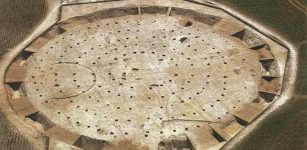 Why Was Dorset Ancient Mega Henge Built In Such A Hurry?
Archaeology | Nov 5, 2020
Why Was Dorset Ancient Mega Henge Built In Such A Hurry?
Archaeology | Nov 5, 2020 -
 Why Was The Dmanisis Gora Fortress Community So Resilient In The Transition From The Bronze To Iron Age
Archaeology | Jun 5, 2023
Why Was The Dmanisis Gora Fortress Community So Resilient In The Transition From The Bronze To Iron Age
Archaeology | Jun 5, 2023 -
 Large Statue Of Ancient Guardian Discovered At Angkor Wat
Archaeology | Aug 7, 2017
Large Statue Of Ancient Guardian Discovered At Angkor Wat
Archaeology | Aug 7, 2017 -
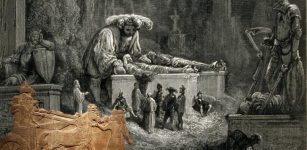 Cities Of Bashan Were Built By Ancient Giants – Archaeological Evidence Exists But Is Ignored
Biblical Mysteries | Nov 25, 2020
Cities Of Bashan Were Built By Ancient Giants – Archaeological Evidence Exists But Is Ignored
Biblical Mysteries | Nov 25, 2020 -
 The Red Dragon Of Wales – Ancient Symbol Dating Back To Roman Times
Ancient Symbols | Jan 3, 2018
The Red Dragon Of Wales – Ancient Symbol Dating Back To Roman Times
Ancient Symbols | Jan 3, 2018 -
 Historical Enigma Of The Ancient Werewolf Ruler – What Powers Did He Possess?
Ancient Mysteries | Jan 9, 2025
Historical Enigma Of The Ancient Werewolf Ruler – What Powers Did He Possess?
Ancient Mysteries | Jan 9, 2025 -
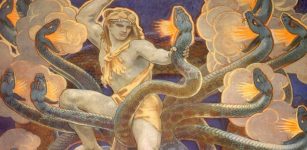 Hydra Greek Monster: Fearsome Multi-Headed Dragon That Inhabited Swamps Of Lerna
Featured Stories | Sep 20, 2019
Hydra Greek Monster: Fearsome Multi-Headed Dragon That Inhabited Swamps Of Lerna
Featured Stories | Sep 20, 2019 -
 Unique Steelyard Discovery Sheds Light On Life At Milecastle 46
Archaeology | Aug 4, 2023
Unique Steelyard Discovery Sheds Light On Life At Milecastle 46
Archaeology | Aug 4, 2023 -
 King Mithradates VI Of Pontus Used Poison To Avoid Death By Poison
Ancient History Facts | Mar 5, 2016
King Mithradates VI Of Pontus Used Poison To Avoid Death By Poison
Ancient History Facts | Mar 5, 2016 -
 Ancient Mysteries Of West Virginia: Did Ancient Celts Visit North America Where They Left An Ogham Inscribed Bone Needle With Christian Symbols?
Artifacts | Mar 1, 2017
Ancient Mysteries Of West Virginia: Did Ancient Celts Visit North America Where They Left An Ogham Inscribed Bone Needle With Christian Symbols?
Artifacts | Mar 1, 2017 -
 On This Day In History: Casanova – Famous Seducer And Adventurer Dies In A Castle In Bohemia – On June 4, 1798
News | Jun 4, 2016
On This Day In History: Casanova – Famous Seducer And Adventurer Dies In A Castle In Bohemia – On June 4, 1798
News | Jun 4, 2016 -
 2nd Century Roman Temple Unearthed In Aswan, Egypt
Archaeology | Feb 23, 2018
2nd Century Roman Temple Unearthed In Aswan, Egypt
Archaeology | Feb 23, 2018 -
 Swedenborg: Man Of Unaccountable Talents, Scholar, Great Intellect And His ‘Spiritual Awakening’
Featured Stories | Jun 28, 2018
Swedenborg: Man Of Unaccountable Talents, Scholar, Great Intellect And His ‘Spiritual Awakening’
Featured Stories | Jun 28, 2018 -
 Ominous Black Layer – A Geological Anomaly Or Scientific Evidence Of A Great Ancient Cosmic Catastrophe?
Ancient Mysteries | Jan 29, 2019
Ominous Black Layer – A Geological Anomaly Or Scientific Evidence Of A Great Ancient Cosmic Catastrophe?
Ancient Mysteries | Jan 29, 2019 -
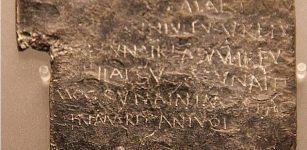 Defixiones: Ancient Roman Curse Tablets Became Big Business
Ancient History Facts | Apr 10, 2016
Defixiones: Ancient Roman Curse Tablets Became Big Business
Ancient History Facts | Apr 10, 2016 -
 Mysterious Advanced Underground Civilization And A Secret Society – Dangerous Knowledge And Verdict – Part 3
Ancient Mysteries | Apr 24, 2018
Mysterious Advanced Underground Civilization And A Secret Society – Dangerous Knowledge And Verdict – Part 3
Ancient Mysteries | Apr 24, 2018 -
 Mysterious Death Of 20 Celts Who Died 2,000 Years Ago In The Three Lakes, Switzerland – Re-Examined
Archaeology | Jun 17, 2024
Mysterious Death Of 20 Celts Who Died 2,000 Years Ago In The Three Lakes, Switzerland – Re-Examined
Archaeology | Jun 17, 2024 -
 On This Day In History: Great Fire Of London Ends – On Sep 5/6, 1666
News | Sep 5, 2016
On This Day In History: Great Fire Of London Ends – On Sep 5/6, 1666
News | Sep 5, 2016



